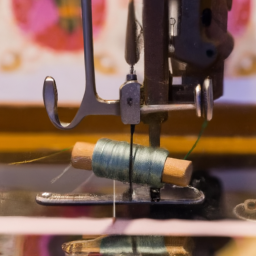
History of Sewing Book

For centuries, sewing has been an essential skill passed down through generations, and the history of sewing books has been instrumental in preserving and advancing this craft. From simple stitch guides to comprehensive manuals, sewing books have played a significant role in enabling individuals to learn, improve, and perfect their sewing techniques.
The Birth of Sewing Books
The earliest known sewing book is believed to be “Opera nel qual s’insegna a tagliar ogni sorte di vestimenta” (The Work in Which One Learns to Cut All Kinds of Clothing), written by an Italian tailor, Domenico Campiglia, in 1550. This influential book introduced pattern making and cutting techniques for tailoring clothes. Since then, sewing books have evolved and diversified.
From Basic Stitching to Creative Designs
Sewing books initially focused on teaching basic stitches, mending techniques, and garment construction methods. However, as fashion evolved and sewing transformed from a necessity to an art form, books began to explore more complex designs, embellishments, and decorative techniques.
During the Victorian era, sewing books often included patterns for intricately designed clothing, heirloom techniques such as embroidery, lacework, and smocking, as well as instructions for creating home decor items like curtains, pillows, and table linens.
Technological Advancements and Modern Sewing Books
In the 20th century, advancements in technology revolutionized the sewing industry, subsequently influencing the content of sewing books. With the invention of the sewing machine, authors began incorporating machine sewing techniques, troubleshooting tips, and instructions on using different machine attachments.
Today, sewing books cover a wide range of topics to cater to diverse sewing interests and skill levels. From books focusing on specific techniques (quilting, appliqué, beading) to those centered around specific garments (dresses, tailored jackets, lingerie), sewists can find resources tailored to their needs.
The Rise of Online Resources
While traditional sewing books continue to be popular, the advent of the internet has further expanded the sewing community’s knowledge base. Many sewing enthusiasts now turn to blogs, online tutorials, and forums for step-by-step instructions, video demonstrations, and inspiration.
However, sewing books retain their value by providing a structured and accessible learning experience. They allow individuals to study the craft offline, follow detailed illustrations and written instructions, and refer back to specific techniques whenever needed.
An Enduring Legacy
The history of sewing books exemplifies the perseverance and adaptability of the sewing community throughout the ages. Regardless of technological advancements, sewing books have maintained their relevance and continue to be cherished resources for both beginners and experienced sewists alike.
Whether you’re exploring vintage guides, perusing modern sewing books, or bookmarking online resources, the knowledge and techniques shared within these pages ensure that the art of sewing remains alive and thriving.




